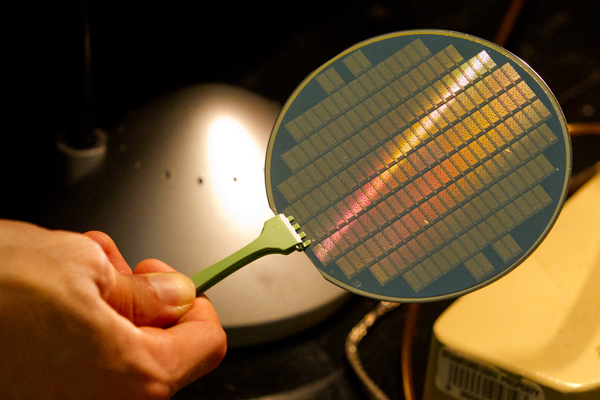A team of Stanford engineers has built a basic functional computer using carbon nanotubes. The research was led by Stanford professors Subhasish Mitra and H.S. Philip Wong.
It was roughly 15 years ago that carbon nanotubes were first fashioned into transistors, the on-off switches at the heart of digital electronic systems, but imperfections in these carbon nanotubes has long frustrated efforts to build complex circuits using CNTs.
For decades, progress in electronics has meant shrinking the size of each transistor to pack more transistors on a chip. But as transistors become tinier, they waste more power and generate more heat – all in a smaller and smaller space, as evidenced by the warmth emanating from the bottom of a laptop.
Many researchers believe that this power-wasting phenomenon could spell the end of Moore’s Law, named for Intel co-founder Gordon Moore, who predicted in 1965 that the density of transistors would double roughly every two years, leading to smaller, faster and, as it turned out, cheaper electronics. Smaller, faster and cheaper has also meant smaller, faster and hotter.
CNTs are long chains of carbon atoms that are extremely efficient at conducting and controlling electricity. They are so thin – thousands of CNTs could fit side by side in a human hair – that it takes very little energy to switch them off.
Over time, researchers have devised tricks to grow 99.5 percent of CNTs in straight lines. But with billions of nanotubes on a chip, even a tiny degree of misaligned tubes could cause errors, so that problem remained. Depending on how the CNTs grow, a fraction of these carbon nanotubes can end up behaving like metallic wires that always conduct electricity, instead of acting like semiconductors that can be switched off.
Since mass production is the eventual goal, researchers had to find ways to deal with misaligned and/or metallic CNTs without having to hunt for them like needles in a haystack. To eliminate the wire-like or metallic nanotubes, the Stanford team switched off all the good CNTs. Then they pumped the semiconductor circuit full of electricity. All of that electricity concentrated in the metallic nanotubes, which grew so hot that they burned up and literally vaporized into tiny puffs of carbon dioxide. This technique eliminated the metallic CNTs in the circuit.
The Stanford researchers also created an algorithm that maps out a circuit layout that is guaranteed to work no matter whether or where CNTs might be askew.
The Stanford team used this imperfection-immune design to assemble a basic computer with 178 transistors. The CNT computer performs tasks such as counting and number sorting, and runs a basic operating system that allows it to swap between these processes.
Though it could take years to mature, the Stanford approach points toward the possibility of industrial-scale production of carbon nanotube semiconductors.
The Stanford research was supported in part by the National Science Foundation, SONIC, the Stanford Graduate Fellowship and the Hertz Foundation Fellowship.
[Image courtesy: Norbert von der Groeben/Stanford University]


